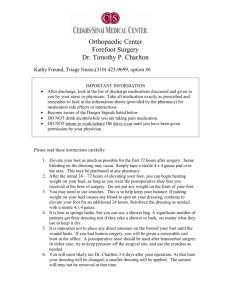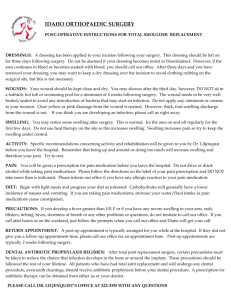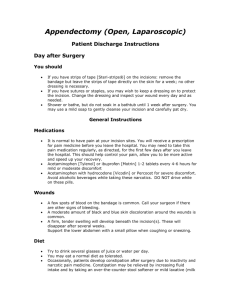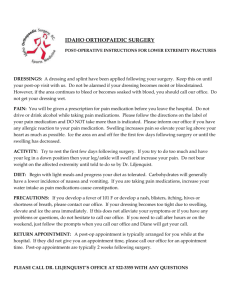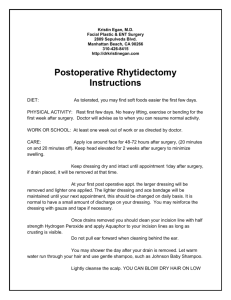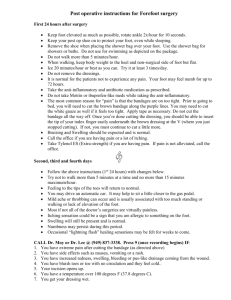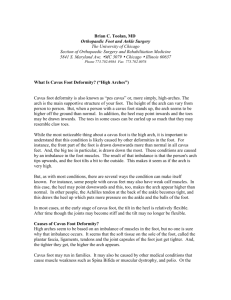Post Op Foot & Ankle Instructions
advertisement
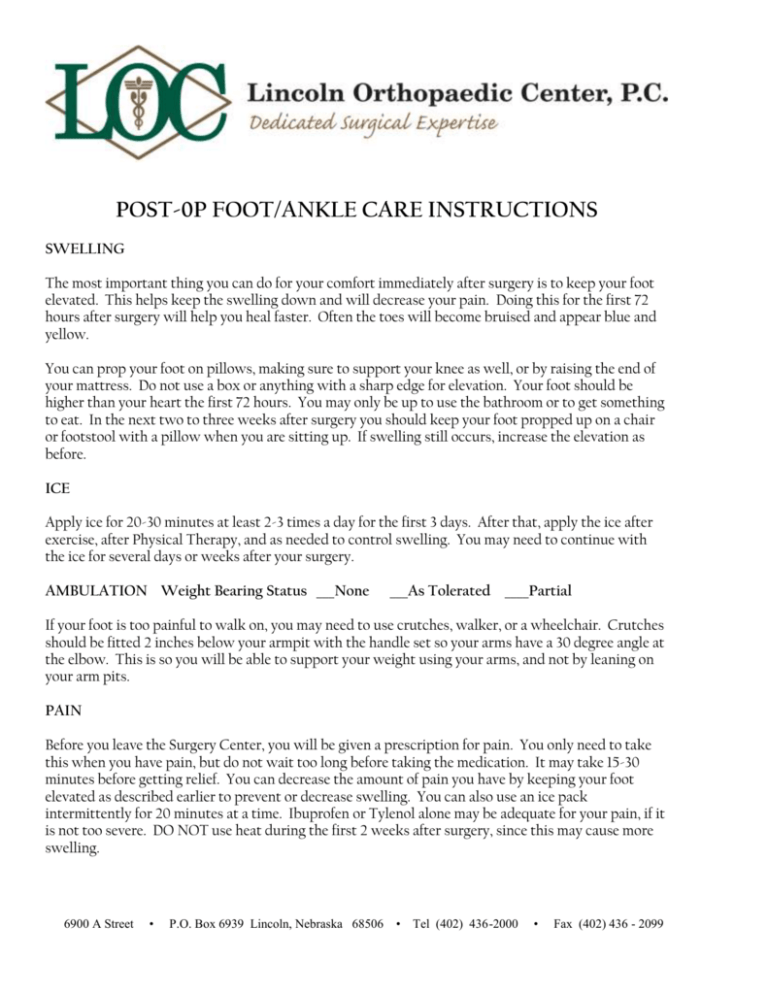
POST-0P FOOT/ANKLE CARE INSTRUCTIONS SWELLING The most important thing you can do for your comfort immediately after surgery is to keep your foot elevated. This helps keep the swelling down and will decrease your pain. Doing this for the first 72 hours after surgery will help you heal faster. Often the toes will become bruised and appear blue and yellow. You can prop your foot on pillows, making sure to support your knee as well, or by raising the end of your mattress. Do not use a box or anything with a sharp edge for elevation. Your foot should be higher than your heart the first 72 hours. You may only be up to use the bathroom or to get something to eat. In the next two to three weeks after surgery you should keep your foot propped up on a chair or footstool with a pillow when you are sitting up. If swelling still occurs, increase the elevation as before. ICE Apply ice for 20-30 minutes at least 2-3 times a day for the first 3 days. After that, apply the ice after exercise, after Physical Therapy, and as needed to control swelling. You may need to continue with the ice for several days or weeks after your surgery. AMBULATION Weight Bearing Status ___None ___As Tolerated ____Partial If your foot is too painful to walk on, you may need to use crutches, walker, or a wheelchair. Crutches should be fitted 2 inches below your armpit with the handle set so your arms have a 30 degree angle at the elbow. This is so you will be able to support your weight using your arms, and not by leaning on your arm pits. PAIN Before you leave the Surgery Center, you will be given a prescription for pain. You only need to take this when you have pain, but do not wait too long before taking the medication. It may take 15-30 minutes before getting relief. You can decrease the amount of pain you have by keeping your foot elevated as described earlier to prevent or decrease swelling. You can also use an ice pack intermittently for 20 minutes at a time. Ibuprofen or Tylenol alone may be adequate for your pain, if it is not too severe. DO NOT use heat during the first 2 weeks after surgery, since this may cause more swelling. 6900 A Street • P.O. Box 6939 Lincoln, Nebraska 68506 • Tel (402) 436-2000 • Fax (402) 436 - 2099 DRESSING AND INCISION CARE You should keep your dressing clean and dry. Often, some blood may permeate the initial bandage. This is normal but continued bleeding is cause for concern and your doctor should be contacted. DO NOT remove the dressing. You may sponge bathe the first few days. If you have good balance, you can prop your foot on the edge of the bathtub (cover it to keep water off) when you take a bath. You may shower with a plastic bag over your leg. It is important to secure the edges of the bag with tape to keep the dressing or cast dry. If you cannot safely handle a shower or cannot wrap your leg to keep the bandage or cast dry, it is suggested that you take a sponge bath. At your first office visit your dressing will be changed and your foot cleansed for you. You will be given instructions on dressing changes. Check your incision every day. Blood around the incision may be cleaned with alcohol or a mixture of Hydrogen peroxide and water. Your foot may be supported with an ACE wrap until the swelling subsides. SHOE WEAR You may need to wear a postoperative shoe or boot. You will need to continue to wear it until otherwise directed. On your “good” foot, wear a shoe that is low-heeled, fits you well, and gives you good support, preferably not strapless sandals or flip-flops. PHYSICAL THERAPY Depending on your procedure, physical therapy may be ordered for you after your surgery or during follow-up office visits. Revised September, 2010 6900 A Street • P.O. Box 6939 Lincoln, Nebraska 68506 • Tel (402) 436-2000 • Fax (402) 436 - 2099
